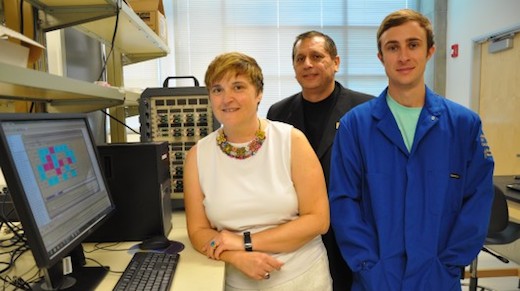
A team of researchers at the University of California, Riverside (UCR) has developed a new graphene-based supercapacitor, which is based on a nanoscale architecture. This breakthrough supercapacitor offers double the energy and power performance over today’s available competitors. Supercapacitors like this could one day be used for charging high-performance electric cars and personal electronics by effectively replacing batteries.
The supercapacitor developed by the UCR team of scientists has a whole new design and boasts of specific energy of 39.3 Wh/kg and power density of 128 kW/kg. Compared to existing, commercially-available supercapacitors this represents about double the performance for both of these values.
The UCR scientists developed a new three-dimensional carbon nanotube porous foam. The large nanoscale pores on the foam’s surface ease the infiltration of electrolyte, while also allowing them to store energy much more densely than in other supercapacitor designs. The foam is made by depositing graphene and carbon nanotubes over a nickel substrate via chemical vapor, followed by a successive deposition of nanoparticles of hydrous ruthenium oxide (RuO2). Each of these particles is less than five nanometers in size. The graphene inside the foam functions as a current collector, as well as a buffer layer that facilitates the conduction of electrons and provides insulation for the foam from the electrolyte.

Supercapacitors are superior over batteries due to their better cycling performance, which holds true for his new graphene-based supercapacitor as well. Its capacity to hold an electric charge also improved by 6 percent after 8,100 charge-discharge cycles, which the team believes to be the result of the electrochemical activation of the active material.
This supercapacitor is very stable, offers stellar performance and is easy to make, which makes it a great candidate for future mass production. It’s clear that lithium-ion batteries, though effective, should be phased out of production and uses in the future, and further development of supercapacitors such as the one developed by this team is certainly one of the ways of achieving this goal.
Related Articles on JetsonGreen.com:
Discarded Cigarette Butts can be Recycled into Energy Storage Devices
Low-Carbon Concrete Products to be Developed by Atlas Block and CarbonCure
Researchers Develop Self-Healing Solar Cells

Leave a Reply
You must be logged in to post a comment.